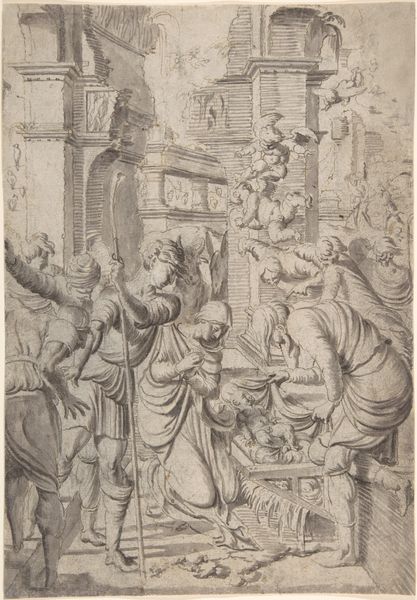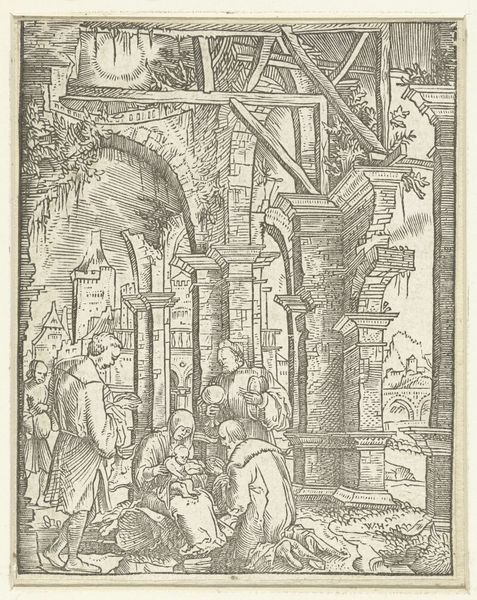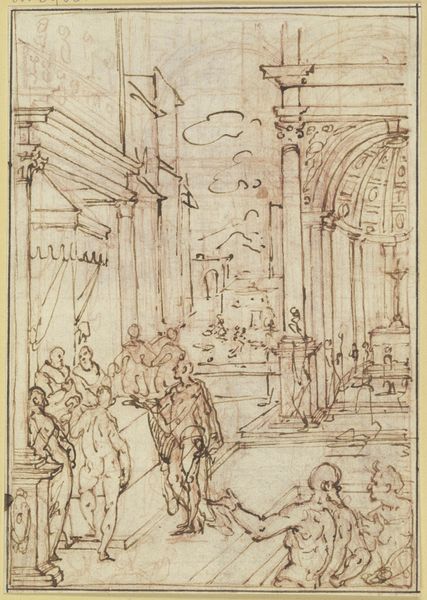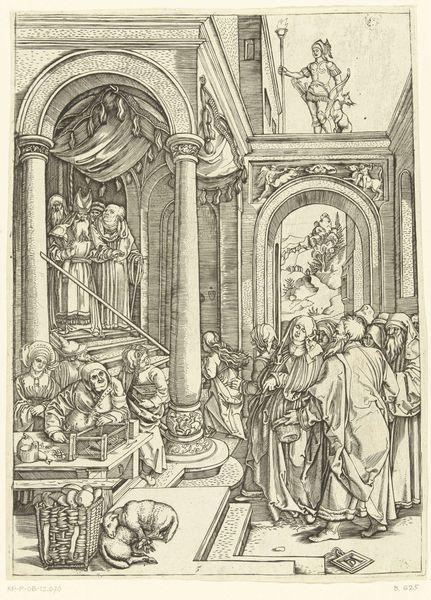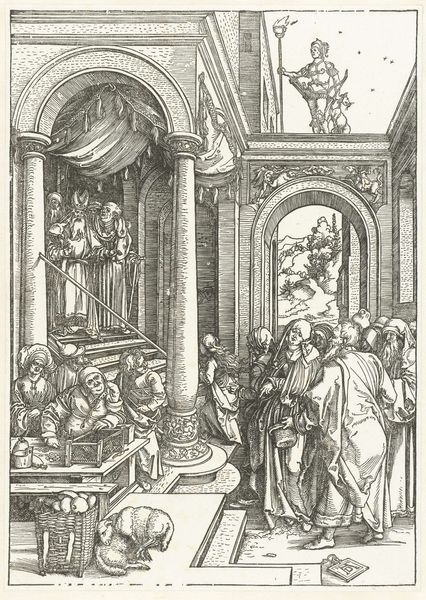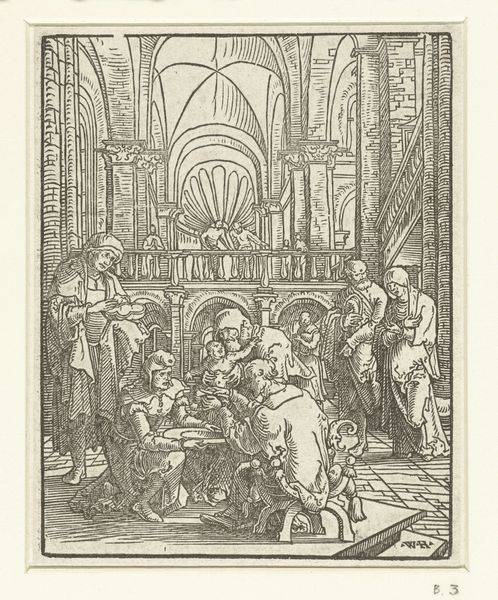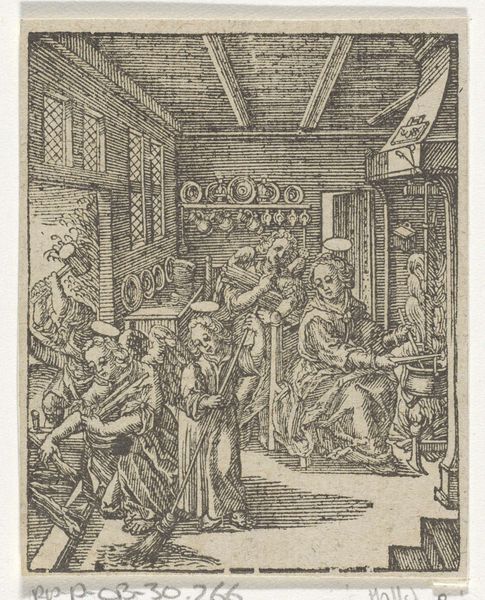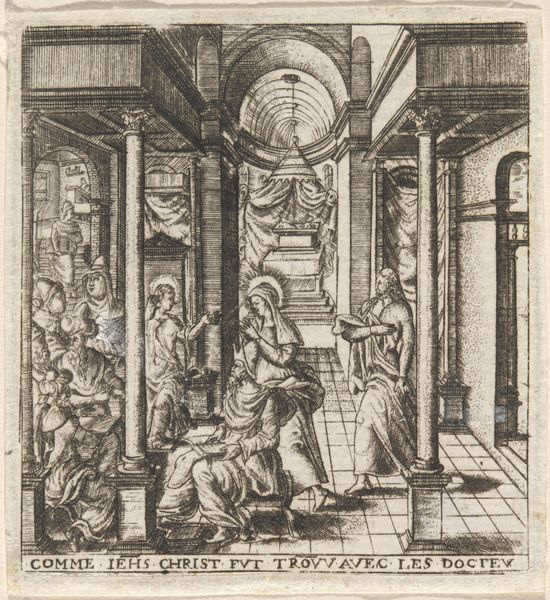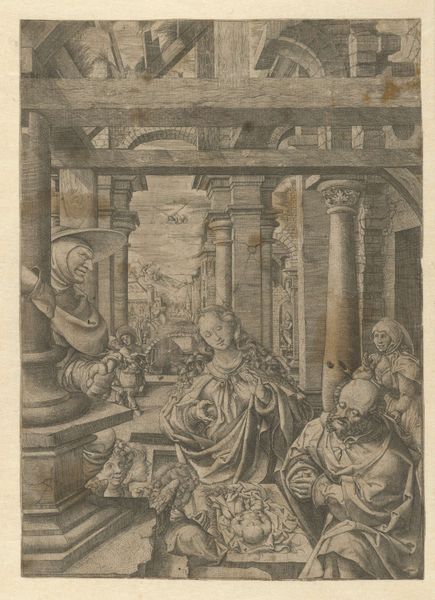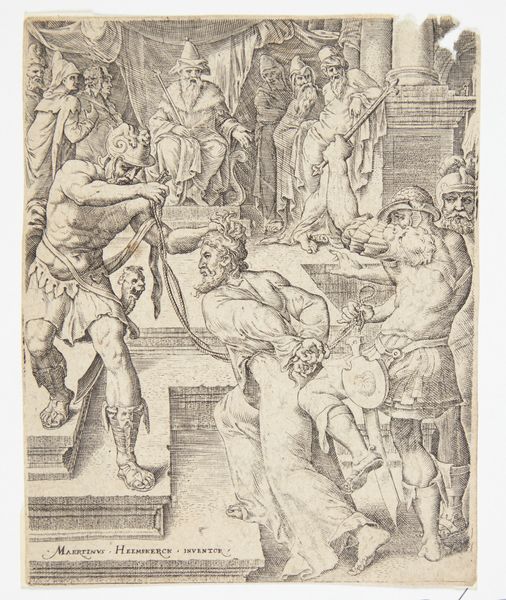
drawing, print, ink, engraving
#
portrait
#
drawing
#
narrative-art
# print
#
figuration
#
form
#
11_renaissance
#
ink
#
line
#
history-painting
#
northern-renaissance
#
engraving
Dimensions: sheet: 12 3/16 x 8 7/16 in. (30.9 x 21.5 cm)
Copyright: Public Domain
Curator: Standing before us is Jost Amman's engraving, "Three Scenes from the Life of the Prophet Daniel," dating back to 1564. It’s a Northern Renaissance piece, brimming with detail, currently housed here at The Met. Editor: It strikes me as almost theatrical. This sprawling, stylized space receding into some vanishing point that's not quite right...gives me the feeling of stagecraft rather than realism. Is it me or is that drawing off a bit? Curator: Absolutely, the perspective might seem a bit off by today's standards, but remember this is the 16th century! Think of it more as a symbolic representation, or rather an intricate setting that could showcase different parts of Daniel's saga—perhaps scenes that aren't physically close together, combined within one frame. What visual cues hint at the narrative? Editor: The eye definitely hops all over. In the center perspective, one table looks heavy with chalices or…loot. So that’s likely Belshazzar's feast? With the mysterious hand writing on the wall that only Daniel could interpret. Curator: Exactly! And on the left, notice Daniel surrounded by figures, likely interpreting a dream for Nebuchadnezzar. That level of precision with just lines and crosshatching really gets me. Editor: The density of lines does create texture, and light and shadow too. It seems a very studied work, almost cold though, even given the religious subject. The column and figures appear very…posed. Curator: That's typical of the formal style of engraving and Northern Renaissance sensibilities, maybe less focus on capturing raw emotion, more on delivering moral teachings, the details, and story. In this setting. It is so ordered in contrast to the madness Daniel faces interpreting messages from some God he hears and those other men clearly do not. Editor: So, rather than trying to conjure feelings or empathy, Amman uses the whole frame as an exercise, a showcase for skill, to render a scene, to lay it bare? Curator: Perhaps. The architecture isn’t merely background. All the ornamentation seems to carry weight—literally holding up the heavens above, in its very construction evoking the story, not only just the biblical tale unfolding in the frame. Editor: It feels a little... didactical...to me. I confess. Curator: It certainly wants to be more than just pretty! But it is pretty interesting too! Perhaps more precisely... a historical tableau, rendered with stunning, controlled artifice! Editor: Agreed. This takes a bit more time, perhaps more work and attention to unpack.
Comments
No comments
Be the first to comment and join the conversation on the ultimate creative platform.

